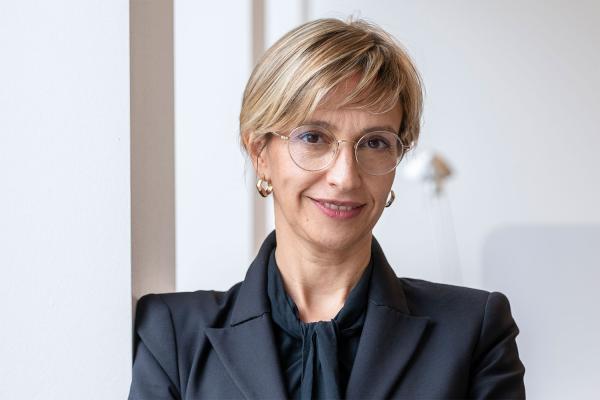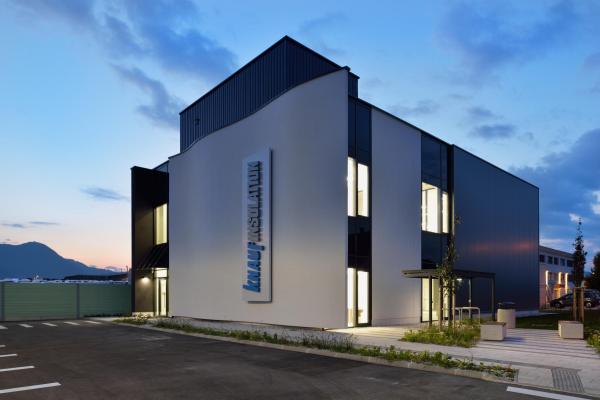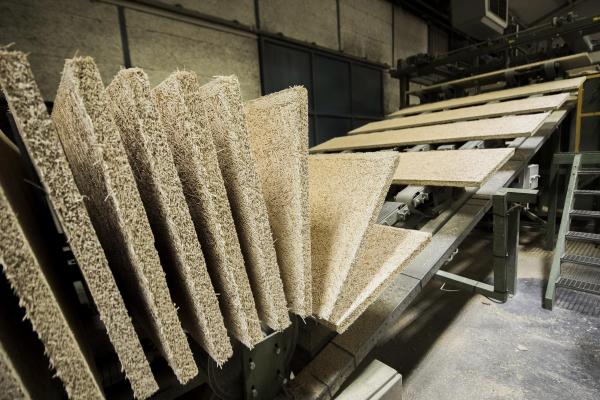The rise of sustainable buildings should be celebrated, says Knauf Insulation’s fire expert, but not at the expense of safety.
New materials, state-of-the-art solutions and systems as well as innovative construction techniques are creating an exciting new generation of sustainable building.

However, Knauf Insulation’s Fire Safety Manager Amaya Osacar warns policy makers, specifiers and building owners that in the rush to create better buildings they must never forget to put fire safety first.
International concern about climate change combined with ambitious European Union strategies has seen a surge in energy efficient renovation, the growing use of renewable energy sources and increasing public awareness of finding new ways to lower the carbon footprint of buildings.
These strategies have resulted in striking climate action. For example, in line with the European Union’s commitment to reduce emissions by at least 55% by 2030, the Renovation Wave aim to renovate 35 million buildings by the end of the decade.
Cut building emissions and put safety first
“Buildings are responsible for 36% of energy-related greenhouse gas emissions, so initiatives such as these will have an incredibly positive impact on people and the planet,” says Amaya.
“But as we accelerate the pace of sustainable building using innovative building materials, alternative energy systems and find new ways to lower the emissions of our buildings and save energy I would like the fire safety implications of each of these strategies understood and adequately addressed.”
Number of façade fires is increasing
The existing demands for high performance thermal insulation and sustainability are adding complexity to façade systems, which are becoming more combustible. At the same time the number of façade fires is increasing.
Energy-saving facades make a significant contribution to improving the sustainability of a building, but certain types of façades can also add extra fire hazards, because of natural air flow. Added to the design, the combustible load of their components may increase the fire hazard.
Understanding these questions and managing specific fire hazards is key to ensuring the safe performance of the building.
It is essential that specifiers and building owners take responsibility for building users and install the best possible firesafe solutions they can.
Fire concerns over PV panels
Amaya also urges caution when it comes to the installation of Photovoltaic Systems (PV). The global popularity of these systems has increased dramatically with the market expected to reach US$223 billion by 2026 from US$52 billion in 2018.
“Relevant studies have noticed the fire hazards introduced by these panels systems. The ignition and shock hazards as well as quick flame spread through the space between the roof and the installation have to be considered,” says Amaya. “Certified installation, considering the size of the space and the inclination and ensuring the location is a safe place to install these networks are vital to keeping these renewable energy sources safe.”
According to AXA Risk Consulting research, for example, causes of fires have included panels not protected against ground fault, conduit junction boxes incorrectly secured and panels moving in the wind or being hit by hail stones resulting in a short.
“Even when a PV system did not start the fire, if damaged by fire it could energise roof material especially if the roof system is metal, and this makes fire-fighting harder,” says AXA. “Furthermore, since panels are often installed on the roof, the detection of a fire is left to observation.”
Prefabricated buildings
Another area that has come under fire safety scrutiny has been the modular construction industry where building components are created at a manufacturing base and then assembled on site. Such buildings can be constructed of wood, steel or concrete.
The value of the industry is set to almost double by 2028, and with good reason, modular construction provides buildings that are low-cost, low labour and offer a highly sustainable alternative to traditional building, particularly if wood is the main component.
“Unfortunately, cavities in modular construction can provide route for the fire spread,” says Amaya. “Using fire safe materials, ensuring correct encapsulation and fire safe junctions between the assemblies are critical.”
Celebrate sustainability, but make buildings safe
Amaya also questions the fire safe use of certain bio-based materials such as hemp, straw or shredded paper which are regarded as having exceptional eco-credentials because of their low embodied carbon — that is the carbon emitted or absorbed over their entire lifecycle.
“Fire safety of the building must be a priority when considering the carbon credentials of a product”, she says. “Ultimately, the rise and rise of healthy and sustainable buildings should be celebrated but we can never forget that the safety has to come first in every case.”
How we can help
Our firesafe sustainable solutions are highly effective at reducing building energy use and cutting emissions and our Glass Mineral Wool is made from up to 80% recycled glass.
A strong example of Knauf Insulation’s commitment to fire safety is Tektalan Wood Wool that combines Wood Wool with Rock Mineral Wool. It provides excellent fire-resistant properties with outstanding thermal and acoustic performance. Comprehensive international fire testing has shown that structures using Tektalan A2 panels achieve a fire-resistance of 180 minutes.
Tektalan does not produce dangerous burning droplets and hardly any smoke during combustion, contributing to the visibility and the tenability of the building area in case of fire.
Related news

25.03.2021
Heraklith® highlighted as a leading example of sustainability
Heraklith has long put sustainability at the heart of everything we do.

03.02.2022
Knauf Insulation's online sustainability chapter to improve building sustainability for a better world
Knauf Insulation has launched new online sustainability chapter to help customers create better buildings.

08.11.2021
How quality inspires sustainable solutions at Knauf Insulation
Knauf Insulation has always been in the business of sustainability — reducing emissions, saving energy and creating better buildings for the benefit for people and the planet.